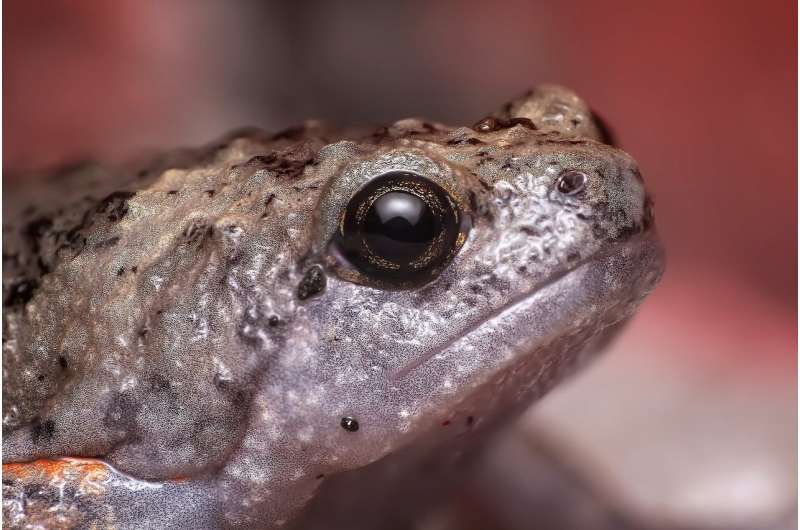Dehydration increases amphibian vulnerability to climate change

Amphibians have few options to avoid the under-appreciated one-two punch of climate change, according to a new study from Simon Fraser University researchers and others.
Rising summer temperatures are also resulting in higher rates of dehydration among wet-skinned amphibians as they attempt to keep themselves cool.
Researchers from SFU and the University of California-Santa Cruz predict that by the 2080s, habitats previously thought to be safe for amphibians will either be too hot or too dehydrating for them to inhabit. Even the edges of wetlands may be too hot for up to 74 percent of the summer and that sunny, dry spots will be too dehydrating for up to 95 percent of the summer.
The study was published yesterday in the journal Global Change Biology.
Researchers studied the environmental conditions in shaded and damp nooks and crannies at the edges of wetlands in the mountains of the Pacific Northwest. They sought to predict how suitable those environments will be for amphibians in the future.
These findings are significant because most previous research on the effects of climate change on amphibians has focused solely on temperature, ignoring an equally important physiological process for amphibians—evaporative water loss.
By incorporating rates of water loss, the researchers found that previous studies may have dramatically underestimated the already dire predictions of climate change impacts on amphibians.
Instead of subjecting live amphibians to invasive measurements, the researchers estimated water loss rates and internal body temperatures using model frogs made of agar (seaweed extract) that closely mimic the water loss and temperatures of live amphibians.
These model frogs were placed in four habitats that encompass the behavior of many different amphibian species—shaded locations on land and in shallow wetlands, and sun exposed locations on land and in shallow wetlands.
The data was related to key environmental conditions, including air temperature, precipitation, and relative humidity, and then linked to forecasts of future climate change.
The study also found that amphibians face a difficult trade-off: animals in cool shaded places on dry land face harmful rates of dehydration, and those in shallow water face harmful high temperatures.
"Such trade-offs will only get more challenging with future climate change, with no single habitat being safe at all times," says Gavia Lertzman-Lepofsky, the study's lead author.
This also means that to remain within their environmental limits, frogs and salamanders will have to move between habitats much more often, using up energy for movement rather than for finding food.
Unfortunately, the larger landscape surrounding amphibians is also changing. As individuals become more dependent on finding damp and shaded spots to escape the heat, there will also be less water available in the landscape as small ponds and wetlands dry up over the long, dry summers.
This puts increasing pressure on populations and provides a sobering view of how amphibians will survive in a hotter, drier world.
More information: Gavia F. Lertzman‐Lepofsky et al, Water loss and temperature interact to compound amphibian vulnerability to climate change, Global Change Biology (2020). DOI: 10.1111/gcb.15231
Journal information: Global Change Biology
Provided by Simon Fraser University





















